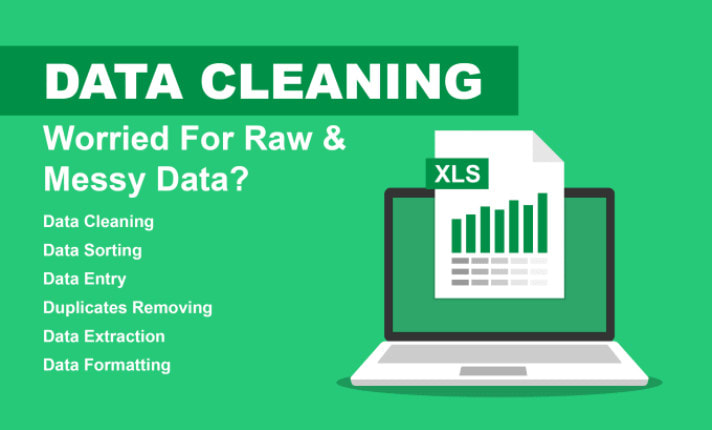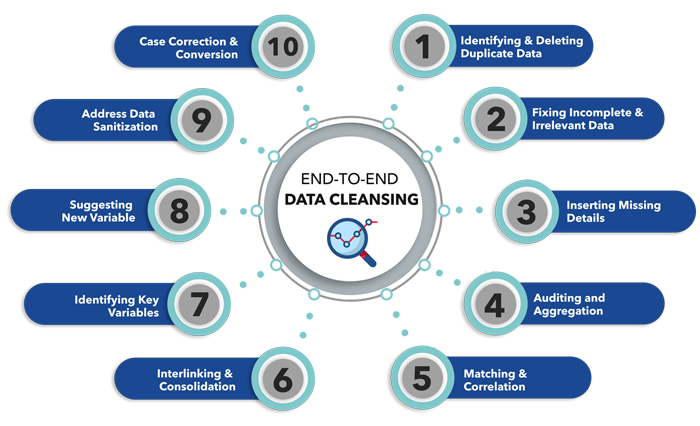Data Entry and Data Cleaning in SPSS|2025
/in SPSS Articles /by BesttutorData Entry and Data Cleaning in SPSS: A Comprehensive Overview of best practices for accurate input, error detection, and preparing datasets for analysis.
In the world of research, data management is critical to ensuring the integrity and quality of analysis. One of the most commonly used software tools for handling quantitative data is SPSS (Statistical Package for the Social Sciences). SPSS is widely employed by social scientists, market researchers, health researchers, and various professionals in data analysis due to its robust features for managing and analyzing data. However, before data analysis can take place, it is essential to ensure that the data is correctly entered and cleaned. Data entry and data cleaning are the foundational steps of any data analysis process, ensuring that the data set is accurate, consistent, and ready for analysis.
This paper explores the importance of data entry and data cleaning in SPSS, detailing methods, techniques, and best practices for preparing data in a way that allows for reliable and valid results.
Table of Contents
ToggleSection 1: Data Entry in SPSS
1.1 Understanding Data Entry in SPSS
Data entry refers to the process of inputting data into a software program such as SPSS. In SPSS, the data is typically entered into a spreadsheet-like window, which consists of rows and columns, where each row represents an individual data point (e.g., a participant, an observation) and each column corresponds to a specific variable. Variables can represent any number of different data types such as numerical values, categories, dates, or text.
1.2 Types of Data
There are several types of data that can be entered into SPSS, including:
- Numerical Data: This refers to quantitative data, such as age, height, weight, income, etc.
- Categorical Data: This type of data refers to variables that categorize data into specific groups such as gender, race, or employment status.
- Ordinal Data: These are categorical data where the categories have a logical order, such as educational level (high school, undergraduate, postgraduate).
- Nominal Data: These are categorical variables without a meaningful order, such as types of fruit (apple, banana, cherry).
- Date/Time Data: Variables representing dates or times, such as the date of birth or the time of an event.
1.3 Data Entry Process in SPSS
The SPSS Data View is where the actual data entry takes place. The data is entered in the rows and columns, and each row is a case (e.g., a respondent or an observation), while each column corresponds to a variable.
-
Step 1: Open SPSS: To begin, open SPSS software. You will be presented with a new data window where you can enter or import your data.
-
Step 2: Define Variables: Before entering the data, define the variables. This is done in the Variable View. Here, you assign each variable a name, label, and specify its type, width, decimals, and measurement level (nominal, ordinal, scale).
-
Step 3: Enter Data: Switch to the Data View. The cells in this view are where the actual data entry happens. Enter the data manually or import it from external sources like Excel files.
1.4 Best Practices in Data Entry
-
Consistency: Ensure that the data is consistent across entries. For example, if a variable is “Gender,” ensure that “Male” and “Female” are used consistently rather than “M” and “F” for some cases and “Male” and “Female” for others.
-
Accuracy: Double-check the data entered to avoid typographical or human errors. This is especially critical in numerical data entry where a small mistake could skew results significantly.
-
Coding: For categorical variables, use numerical coding (e.g., 1 for male, 2 for female) instead of entering textual data. This not only saves space but also allows for easier data manipulation and analysis.
Section 2: Data Cleaning in SPSS
2.1 The Importance of Data Cleaning
Data cleaning is a crucial step in the data analysis process, as raw data often contains inaccuracies, inconsistencies, missing values, or outliers that can negatively impact the results of statistical analysis. The primary goal of data cleaning is to ensure that the data is accurate, complete, and formatted correctly before performing any statistical analyses.
2.2 Common Data Issues
Before diving into the steps of data cleaning, it’s essential to understand the most common issues encountered during data cleaning:
- Missing Data: Incomplete or missing entries in a dataset. This may occur due to non-responses in surveys or errors during data entry.
- Outliers: Data points that are significantly different from the rest of the data. Outliers can result from data entry errors or represent actual extreme values in the dataset.
- Inconsistent Data: Instances where the same type of data is entered in different formats or with different codes (e.g., “Male” vs. “M”).
- Duplicate Entries: When the same data is entered more than once, leading to redundancy and distortion in analysis.
- Invalid Data: Data that does not conform to the expected range, type, or format for a variable (e.g., entering “1000” for a variable expecting values between 1 and 10).
2.3 Techniques for Data Cleaning in SPSS
Several techniques in SPSS can help identify and address these issues:
-
Handling Missing Data: SPSS offers several strategies to handle missing data:
- Listwise Deletion: This method removes any case (row) that has missing values for any of the variables being analyzed. It is commonly used when the amount of missing data is small.
- Pairwise Deletion: This approach excludes cases with missing data only for specific variables that are being analyzed. It is useful when some data points are missing but not enough to impact the analysis.
- Imputation: This involves filling in missing values based on some method, such as replacing missing data with the mean, median, or mode of the observed data. SPSS offers options for imputation, such as multiple imputation.
-
Identifying Outliers: Outliers can be identified through various methods in SPSS:
- Descriptive Statistics: Use measures like the mean and standard deviation to detect values that fall outside a reasonable range.
- Box Plots: Box plots visually display data distributions and highlight extreme values that may be outliers.
- Z-scores: Calculate z-scores to identify data points that are more than a certain number of standard deviations away from the mean.
-
Correcting Inconsistent Data: SPSS provides features to recode variables and create consistent categories. For instance, if gender is recorded as “Male,” “M,” and “Male”, the Recode function can standardize these entries into a single category (e.g., 1 for male, 2 for female).
-
Removing Duplicates: SPSS has a procedure called “Identify Duplicate Cases,” which can be used to identify and remove duplicate entries based on specific variables.
-
Validating Data: SPSS also offers options for data validation through the “Data Validation” tool, allowing users to create rules that restrict the data entry process to specific ranges, formats, or values. This ensures that no invalid data is entered in the first place.
2.4 Using Syntax for Data Cleaning
While SPSS offers an intuitive graphical user interface for data cleaning, advanced users often prefer using syntax to automate and reproduce data cleaning tasks. Syntax allows users to execute commands that clean the data programmatically. For instance, users can write syntax to recode variables, handle missing values, or remove duplicates.
Here’s an example of how to use syntax to recode a variable in SPSS:
RECODE gender (1='Male') (2='Female') INTO gender_clean.
EXECUTE.
This syntax will recode the variable gender with values 1 as “Male” and 2 as “Female” into a new variable called gender_clean.
2.5 Documenting Data Cleaning Process
It is essential to document all data cleaning steps taken to ensure transparency and reproducibility of the data cleaning process. This documentation can help others understand how missing data was handled, outliers were addressed, or variables were transformed.
2.6 Best Practices in Data Cleaning
- Be Thorough: Address all potential issues with the data, such as missing values, outliers, or duplicates, before beginning analysis.
- Use Multiple Techniques: Combine various techniques (e.g., visual checks, statistical tests, and SPSS tools) to ensure that all issues are addressed.
- Maintain a Clean Record: Keep a detailed log of all data cleaning actions taken to ensure transparency and reproducibility.
Section 3: Challenges and Solutions
3.1 Challenges in Data Entry and Cleaning
Data entry and cleaning can be time-consuming and prone to errors, especially when dealing with large datasets. Some common challenges include:
- Volume of Data: Large datasets can be difficult to manage and prone to human error during data entry.
- Complexity of Data: Some variables may require complicated coding schemes or multiple transformations, adding to the complexity of the data cleaning process.
- Subjectivity in Data Cleaning: Decisions about handling missing values, identifying outliers, or recoding variables often involve subjective judgment.
3.2 Solutions to Overcome Challenges
To mitigate these challenges, the following solutions can be applied:
- Automate Processes: Use SPSS syntax or custom scripts to automate repetitive tasks such as recoding or checking for outliers.
- Train Data Entry Personnel: Proper training in data entry protocols can reduce errors and ensure consistency.
- Use Data Validation: Enforce rules for valid data entry through SPSS’s data validation tools to prevent invalid data from being entered.
- Check for Errors Regularly: Perform regular checks on the data during and after data entry to identify issues early.
Conclusion
Data entry and data cleaning are crucial steps in ensuring the quality of data used for statistical analysis in SPSS. Proper data entry ensures that the data is consistent, accurate, and appropriately coded, while data cleaning ensures that errors, inconsistencies, and missing data are addressed before analysis. By following best practices and utilizing SPSS’s built-in features, researchers can ensure that their data is ready for valid and reliable statistical analysis.
Needs help with similar assignment?
We are available 24x7 to deliver the best services and assignment ready within 3-4 hours? Order a custom-written, plagiarism-free paper




